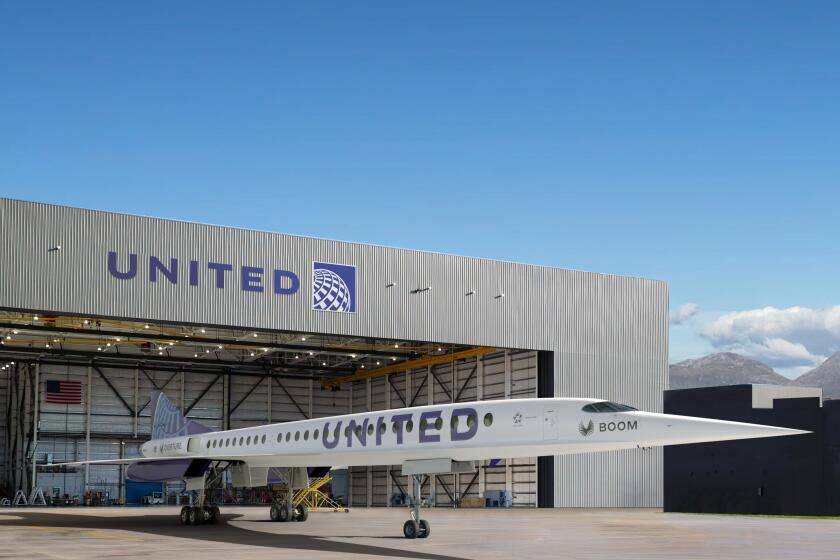Wal-Mart’s 1st-quarter earnings top expectations
- Share via
Rising gas prices are forcing many shoppers to cut back on shopping trips to Wal-Mart, adding another challenge for the world’s largest retailer as it tries to reverse a prolonged slump in U.S. sales.
Wal-Mart Stores Inc. reported Tuesday that its fiscal first-quarter profit rose 3%, ahead of Wall Street expectations, but said an important measure of sales fell for the eighth quarter in a row.
Sales at U.S. stores open at least a year — called comparable-store sales and considered an important barometer of a retailer’s health because it excludes store openings and closings — fell 1.1% compared with the same quarter a year earlier.
Wal-Mart has struggled with this measure of sales for two years as Americans have turned to other retailers, notably dollar stores, to buy household basics. The company’s customers, especially those living paycheck to paycheck, are also disproportionately affected by higher gasoline and food prices as well as lingering economic problems such as unemployment.
The Bentonville, Ark., discount giant attributed last quarter’s comparable-store sales decrease to a decline in customer traffic as many shoppers consolidated their trips to Wal-Mart stores to save money on gas. The company is also having difficulty enticing customers shopping for groceries to check out more high-priced sections such as clothing and home goods.
“We recognize we still have work to do, and comp sales growth remains the greatest priority for me and the entire Wal-Mart U.S. team,” Mike Duke, chief executive of Wal-Mart, said in a statement. He said the company’s new strategies — which include opening smaller stores, bringing back items it had scrapped and a renewed focus on low prices — were “gaining traction.”
Wal-Mart reported profit of $3.4 billion, or 97 cents a share, for the three months ended April 30, compared with $3.3 billion, or 87 cents, in the year-earlier period.
Total revenue, including membership fees at its Sam’s Club warehouse stores, rose 4.4% to $104.2 billion, up from $99.8 billion a year ago.
The company’s international business had a strong quarter, with Duke saying the segment “remains the key growth driver for our company.” Mexico, China and Chile had the highest percentage sales increases for the first quarter compared with last year, he added.
For the current quarter ending July 29, Wal-Mart said it expected a rise of 1% to a decline of 1% for U.S. comparable-store sales.
Shares of Wal-Mart fell 52 cents, or less than 1%, to $55.54 on Tuesday.
Brian Sozzi, an equity research analyst at Wall Street Strategies, said despite the better-than-expected profit, Wal-Mart’s results were “adequate at best.”
“For every positive facet of the quarter there seemed to be twice as many negatives,” he said in a note to investors. “At a time of increased wallet strain on Wal-Mart’s core low-income consumer, we should be seeing share gain (like 2008) not share loss.”
More to Read
Inside the business of entertainment
The Wide Shot brings you news, analysis and insights on everything from streaming wars to production — and what it all means for the future.
You may occasionally receive promotional content from the Los Angeles Times.










